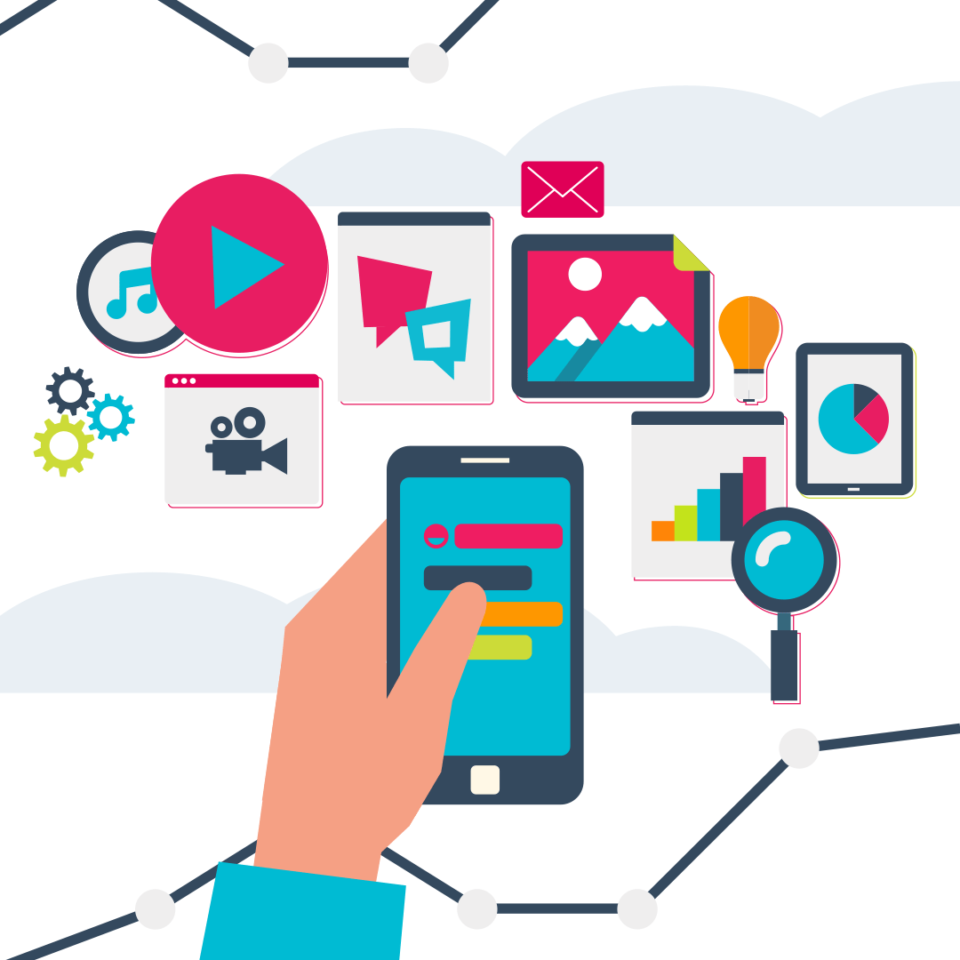From a need to the sale: Content marketing strategy
A few years ago, I was buying a wedding gift for my friend, and I wanted to get her something different– without that being a microwave, blender, or some painting. For inspiration, I started from Google, where I typed something like the original wedding gifts. A lot of content was displayed, and I started reading from the beginning. Of course, there were also posts about blenders and travel vouchers, but somehow that was not original enough for me. After several texts, I came across one in which a digital photo frame was offered as a suggestion, and suddenly I became interested. The content was not paid, there were no links or references to specific stores, but it was written from one author – and I want to thank her for the idea!
As I realized the need for a digital photo frame, I started searching again, and moved deeper into the funnel and went from one online shop to another: compared models, reviews, prices, and functionalities until I decided on one and bought it.
To cut the story short – I almost was part of one’s content marketing strategy. Why almost? Because no home appliance store remembered to write a blog post for their site or to pay for a post on one of the professional websites or blogging sites, on the topic of original wedding gifts or gifts for any other occasion, and to link various items on offer in the text. “Only” that link was missing, so that my customer journey from raising awareness to buying was complete.
Although content marketing as a strategic approach has long been established in marketing, it is experiencing its peak during the last 10+ years, thanks to the internet and the development of modern technologies which provided marketers with a handful of opportunities to create and use different types of relevant content for our target group and their placement through different communication channels, all in order to reach the goal.
Elements of a content marketing strategy
From the definition in the previous paragraph, we can easily conclude what necessary elements content marketing strategy needs to have to be successful:
Exceptional knowledge of the target group – in content marketing they are also called customer or buyer personas. Besides the standard information on demographic characteristics, for our personas, it is essential to know what their needs are, and which our content and our product can solve. In my case, the “problem” was finding an adequate wedding gift.
Then, to have a goal. In most cases, the goal is to sell, and if we want to go even further, then the goal is a satisfied customer who will recommend us. Every action and content that we create for our persona should be in the function of fulfilling the goal, or, bringing our persona closer to the goal. To put it simply – in my situation with the frame, one goal would be to create the awareness, the second goal to visit the website, then possibly do a little research on the internet to get even more interested, and then come back to the site and buy the frame. And we can go a step further so that our goal later is that I buy something from them again or that I recommend them to my friends.
The path that our persona takes from the moment of becoming aware of the need to purchase or recommend us is called a customer or buyer journey. In other words, these are the key points and experiences that a persona goes through when deciding to buy something. And our task is to define those key points (so-called pain points) and try to respond to them as best we can. In my example – the first answer to my query would be an inspiring blog post on the subject of the most original wedding gifts, that an online shop wrote or paid for, then if I am further interested, the reviews, additional photos, or information about that frame would help, then remarketing, and finally, if I buy it, to offer me some additional benefit to purchase something else or to buy again from them later. That is the reason why it is very important to define thoroughly and in detail the journey and to anticipate different scenarios and reactions, in order to adequately prepare and provide the best possible user experience that will bring our personas closer to purchasing.
This brings us to the fourth and fifth elements – content and communication channels. In content marketing on online channels, you can write blog posts, produce different types of video content, infographics, AR and VR content, newsletters, posts on social media, prize activations, UGC content, etc. the format and the message that we will create will depend on the communication channels and the amount of information we want to convey. If our persona is browsing on search engines, then that means we need to have a site that is well optimized for keywords and phrases that match our persona’s query. Furthermore, suppose the persona has decided to research us a little bit more. In that case, we should have high-quality and relevant content on other channels: social networks, newsletters, and partner sites. If a persona came to our site, it would be good to have useful blog posts, reviews of satisfied customers, adequate explainer videos that will inform, educate and further motivate them to buy our product. Even if they don’t buy it right away, there are methods and activities through which we can remind them to make a purchase, in the form of various remarketing options.
To sum up
When:
- You have a good understanding of the target group, their needs, and behaviour
- You have a product or service that solves the problems and challenges the target group is facing
- You learn how communication channels work and what type of content you have at your disposal
- You define your goals and customer journey
You have done a significant amount of work, and all that remains is to implement it, monitor it, and if needed, correct it.
From words to deeds
So far, we have created various content and designed different activities for the target groups of our clients following their situation and their needs. Here are a few examples.
One of the newest examples is for Ada Mall, during a recent state of emergency. The situation was delicate; it was not possible to plan much in advance, but we made sure that the content that was created and placed was in line with the situation, without an explicit invitation to shop and visit the shopping center, with focus on the measures that the shopping center took to be safe and healthy for the visitors and tenants.
On that occasion, we created informative and educational posts on social networks, a video that shows what measures have been taken, as well as an infographic that reminds tenants and visitors of responsible behavior.
Read more about this type of content here.
We already wrote about the specifics of marketing for cryptocurrencies – Facebook and Google have banned their paid advertising, therefore crypto-based businesses, as well as marketers who work with them, have to cope in different ways to increase the visibility of products and services. One way to achieve this is through content – organically – by responding to the needs of the specific target group.
For our client, an online exchange office for cryptocurrencies called ECD, and their clients, we perform monthly technical analysis for BITCOIN. Thus we create additional value for those who trade with these currencies, while at the same time we position ECD as an expert and partner in the minds of traders.
For somewhat less experienced, but certainly interested people, we created and implemented a Top trader contest with which we wanted to bring cryptocurrencies and its advantages closer to them, through prize games, entertainment, and accessible educational material.
And finally, if you read our blog posts regularly – congratulations – you are one of our personas. 🙂 If you want to hire us to improve the position and sales of your product or service, with the help of a content marketing strategy – you can contact us at any time.



